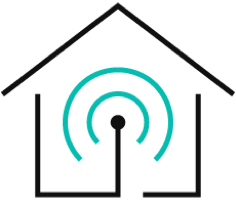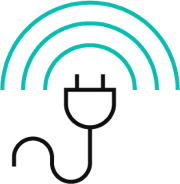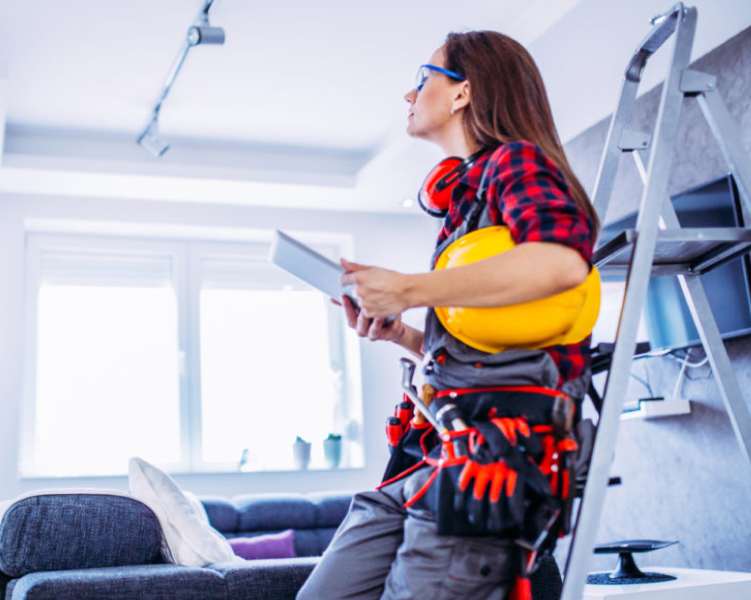It's likely that when you discuss lighting with clients, they haven't thought about it. People who require lighting frequently take it for granted, but lighting may significantly impact their performance for businesses.
When we use "smart" lighting, we mean just that. We refer to illumination in this context as intended to assist businesses in achieving their objectives. A business's benefits from well-planned lighting may incorporate "smart lighting," which includes an automated or artificial intelligence component.
If you have already decided smart lighting system for your retail store and need a solid controller to automate functions, Evvr Hub takes the crown for being the best multi-purpose, in-wall controller.
- The Idea of Retail Lighting
- Smart Lighting Solutions - Facts & Figures
- Advantages of Using Innovative Lighting Solutions In Retail
- Devising The Perfect Retail Lighting System
- Evvr In-Wall Relay Switch - Better Control, Higher Efficiency
The Idea of Retail Lighting
Retail lighting refers to all the light sources you utilize to illuminate your space and draw attention to specific items or regions of your business. A key component of your merchandising plan when launching a retail store is the lighting you select. Effective lighting creates ambiance, directs clients to important areas of your store, and can even attract customers and keep them interested and shopping for longer.
Smart Lighting Solutions - Facts & Figures
The number of people entering exhibit zones will rise due to adequately lighting store premises. Compared to the baseline scenario with uniform lighting, 15% more people entered the show area with soft pastel lighting because 8% more customers accessed the exhibit space.
Another lighting setup produced an exciting 6% boost in sales because it included spotlighting and soothing pastel colors.
So, using IoT for retail is a good way to make retail stores more efficient. Studies show that individuals mistakenly believe fresh food's color to be more saturated than it is. Therefore, consumer preferences go further when it comes to the actual product selection; they want the color to be even more vivid than the one they recall. The ideal lighting formula can improve display and increase sales.
Second, bad lighting affects the fresh food's freshness. As a result, the appropriate lighting setup keeps food fresh for longer, resulting in longer shelf life and reduced waste.
In other words, smart lighting techniques can help make a difference in your shop sections by improving both the appearance and quality of your most perishable goods.

Advantages of Using Innovative Lighting Solutions In Retail
By providing themselves the choice to alter their ambient lighting at different times of the day, retailers may benefit from the impacts of various lighting kinds. They may, for instance, add dimmers to give them more control over brightness. And if they have traditional power outlets, they can get Evvr In-Wall Relay Switch that will turn them into smart plugs, allowing them to control smart lights and other fixtures remotely and efficiently.

Impact on Buying Habits
Lighting is just one of the ambient aspects that businesses use to influence the purchasing behaviors of their customers.
According to studies, lighting has a significant impact on how we feel. If you've ever suffered from SAD (seasonal affective disorder), which occurs when you get less natural light due to the weather, this is no surprise. Artificial light can have a similar impact at these times.
When the lighting is poor or dark, shoppers may move more slowly, but good lighting encourages shoppers to make more sensible purchases. People's emotions can be amplified by intense lighting, which may increase their propensity to make impulsive purchases. You may observe this in action at stores where displays of the goods that customers like to buy are on impulse line, where customers wait in line to check out.
Enhanced Employee Productivity
Since at least a century ago, investigations on illumination and worker productivity have been carried out, including the iconic Hawthorne study. Workers who were exposed to less light tended to be less productive.
This makes sense when viewed in the context of humans' circadian rhythm. Our bodies naturally go through cycles of alertness and tiredness throughout the day. The lighting can disrupt those patterns. When it is 10 a.m., and your office has low illumination, for instance, you can feel sleepy at a time of day when you would normally be attentive.
Circadian lighting, which refers to designing lighting systems to correspond with the circadian cycle, has been the subject of recent research. One of these is altering the position, angle, and color of lights to simulate what the sun does in nature.
Efficiency & Cost-Effectiveness
Integrated or programmable lighting can improve a company's operational effectiveness. For instance, lights can be managed and checked from a laptop or mobile device, even if the user is thousands of kilometers away. Huge energy savings may be realized, benefiting companies pursuing sustainability objectives.
LED saves money and consumes less energy. Additionally, maintenance costs are decreased because fewer bulbs need to be changed. In keeping with the previous part, LED lighting improves the working environment. Because it doesn't glare like traditional kinds of lighting, the illumination is less taxing on the eyes and lessens headaches and eye strain. The old fluorescent tubes' tendency to shatter won't be a concern in workplaces either.
Solid Brand Impression
Imagine entering a place of business. What feeling do you receive if a desk lamp mostly provides the lighting or if there is a sharp glare from overhead fluorescent lights? It's fair to argue that a company's lighting conveys a message. Thus the message must be what the company wants customers to hear!
A thoughtfully selected lighting scheme can convey attention to detail and sound judgment. These downlights or landscape lights can give the business's customers a sense of power and authority. Decorative lighting isn't only about looks.
Devising The Perfect Retail Lighting System
Thinking It Through
In a retail setting, indiscriminate lighting is not ideal for product display. The right lighting in a store contrasts the range of goods and lets the buyer concentrate on one item at a time. The customer's senses become overwhelmed by excessive illumination. Instead, find the right amount of accent and ambient lighting. Avoid utilizing too many clashing hue temperatures for the same reasons.
Ambiance Is Attractive
The store's design depends on striking the ideal balance between accent and ambient lighting. Accent lighting can be enjoyable, but if you use it to emphasize everything while focusing on nothing in particular, you lose the capacity to make items stand out. Ambient lighting, typically positioned on the ceiling or the wall, aids the buyer in a more thorough inspection, analysis, and evaluation of your goods. Customers find it harder to shop for your products in poor lighting or dark stores.
Planning Is The Key
When planning the lighting for store space, consider the range of possibilities. A broad cone of general lighting is produced using volumetric lighting. Because floor plans and product displays should remain adaptable, most designers favor track lighting or adjustable recessed lighting. Consider your space's specific lighting requirements as a result. What is needed for the space? Where are the light fixtures? Is the room cluttered with too many distinct fixtures that are scattered about? If so, this can result in some visual confusion. By designing the area with a layout that highlights products and matches each light fixture to the most appealing display, you can avoid this impact. Avoid lighting fixtures that are at the same level as well. Change the brightness setting to better highlight particular products.
Adding Color & Character
Calculate the square footage of your retail space and consider it in terms of lumens, a scientific measurement of ambient light emitted by a lighting source. You should allot a specific quantity of lumens to each square foot. For instance, a square foot at floor level needs 20 lumens to produce ambient lighting. An elevated surface or table may require 30 lumens. Between 50 and 70 lumens per square foot are usually needed in a workstation or retail setting.
The correct color temperature of LED bulbs, determined by their K (kelvin) value, is crucial for a retail setting. Color temperature can influence how things are displayed by generating a warm or cool environment.
Evvr In-Wall Relay Switch - Better Control, Higher Efficiency
Much of our suggestions revolved around smart and remotely-controllable lighting solutions. Since many stores have the turn-of-the-century infrastructure, they might wonder: "how can we get on that bandwagon?" The answer is simple and no-neutral - Evvr In-Wall Relay Switch, it's also compatible with HomeKit. This nifty device turns conventional power outlets into smart ones, allowing owners to change the intensity and temperature of light through smart applications and interfaces.
Evvr can offer you a comprehensive smart home solution whether you are an integrator, professional installer, distributor, or DIYer. Get in touch with us and become our partner today!
















